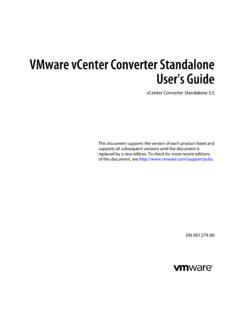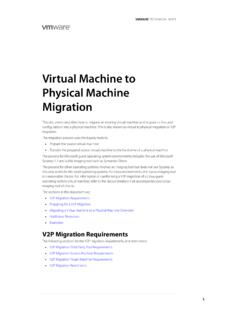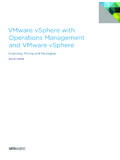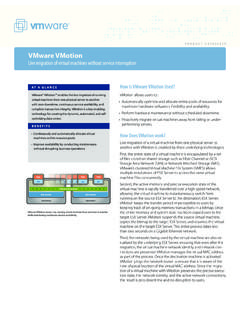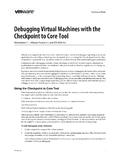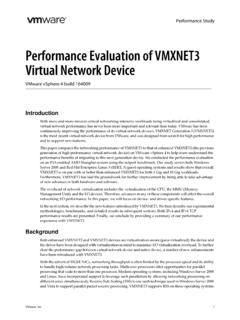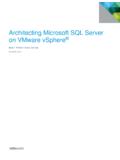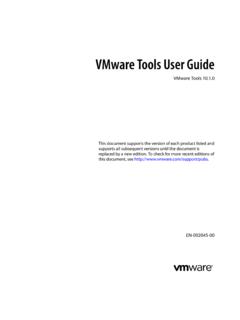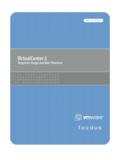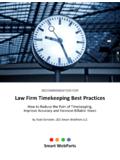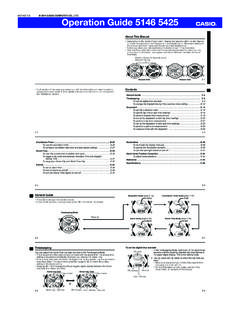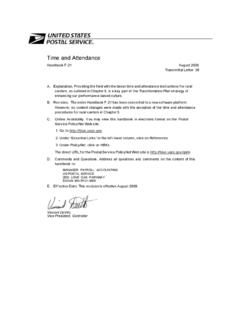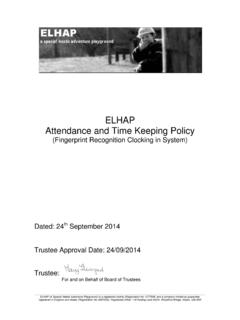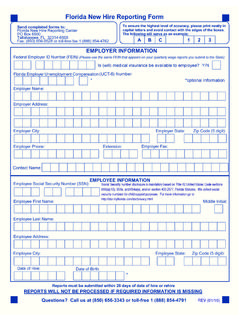Transcription of Timekeeping in VMware Virtual Machines
1 Timekeeping in VMware Virtual Machines VMware vSphere , Workstation , Fusion INFORMATION GUIDE. Timekeeping in VMware Virtual Machines VMware vSphere , Workstation , Fusion Table of Contents Introduction ..4. Timekeeping Basics ..4. Tick Counting ..4. Tickless 5. Initializing and Correcting Wall-Clock PC Timer Hardware ..6. PIT .. 7. CMOS RTC .. 8. Local APIC Timer .. 8. ACPI 8. TSC .. 8. HPET ..9. VMware Timer Virtualization ..9. Virtual Virtual CMOS RTC .. 10. Virtual Local APIC Timer ..11. Virtual ACPI Timer ..11. Virtual TSC ..11. Pseudoperformance Counters.
2 13. Virtual HPET .. 13. Other Time-Dependent 13. VMI Paravirtual Timer .. 14. Timekeeping in Specific Operating Systems .. 14. Microsoft 14. Linux .. 15. Kernels Before 16. Clocksource 18. Paravirtual Kernels .. 18. 18. Synchronizing Virtual Machines and Hosts with Real Time .. 19. Using VMware Tools Clock Synchronization .. 20. Enabling Periodic Synchronization .. 20. Disabling All Synchronization .. 21. Using Microsoft W32 Time in Windows Guests .. 22. Using NTP in Linux and Other 23. Host Clock Synchronization .. 23. Time and Performance Measurements Within a Virtual Machine.
3 24. Time Measurements .. 24. Performance Measurements .. 24. Event Counts .. 25. Memory Usage .. 25. CPU Usage .. 25. INFORMATION GUIDE /2. Timekeeping in VMware Virtual Machines VMware vSphere , Workstation , Fusion Resource 26. CPU Pressure .. 26. Memory 27. Troubleshooting .. 28. Best 28. Gathering 29. Observe Symptoms 29. Test Operating System Clock Against CMOS TOD 29. Turn On Additional 29. Gather VM-Support Dump .. 31. 32. INFORMATION GUIDE /3. Timekeeping in VMware Virtual Machines VMware vSphere , Workstation , Fusion Introduction Because Virtual Machines work by time-sharing host physical hardware, they cannot exactly duplicate the timing activity of physical Machines .
4 VMware Virtual Machines use several techniques to minimize and conceal differences in timing performance, but the differences can still sometimes cause Timekeeping inaccuracies and other problems in software running in a Virtual machine. This information guide describes how Timekeeping hardware works in physical Machines , how typical guest operating systems use this hardware to keep time and how VMware products virtualize the hardware. This paper is intended for partners, resellers and advanced system administrators who are deploying VMware products and need a deep understanding of the issues that arise in keeping accurate time in Virtual Machines .
5 The VMware knowledge base contains additional and more frequently updated information, including best practices to configure specific guest operating system versions for the most accurate Timekeeping , as well as recipes for diagnosing and working around known issues in specific versions of VMware products. Timekeeping Basics Computer operating systems typically measure the passage of time in one of two ways: Tick counting The operating system sets up a hardware device to interrupt periodically at a known rate, such as 100 times per second. The operating system then handles these interrupts, called ticks, and keeps a count to determine how much time has passed.
6 Tickless Timekeeping A hardware device keeps a count of the number of time units that have passed since the system booted, and the operating system simply reads the counter when needed. Tickless Timekeeping has several advantages. In particular, it does not keep the CPU busy handling interrupts, and it can keep time at a finer granularity. However, tickless Timekeeping is practical only on Machines that provide a suitable hardware counter. The counter must run at a constant rate, be reasonably fast to read and either never overflow or overflow infrequently enough that the operating system can reliably extend its range by detecting and counting the overflows.
7 Besides measuring the passage of time, operating systems are also called on to keep track of the absolute time, often called wall-clock time. Generally, when an operating system starts up, it reads the initial wall-clock time to the nearest second from the computer's battery-backed real-time clock or queries a network time server to obtain a more precise and accurate time value. It then uses one of the methods described above to measure the passage of time from that point. In addition, to correct for long-term drift and other errors in the measurement, the operating system might include a daemon that runs periodically to check the clock against a network time server and make adjustments to its value and running rate.
8 Tick Counting Many PC-based operating systems use tick counting to keep time. Unfortunately, supporting this form of Timekeeping accurately in a Virtual machine is difficult. Virtual Machines share their underlying hardware with the host operating system, or on VMware ESX , the VMkernel. Other applications and other Virtual Machines might also be running on the same host machine. At the moment that a Virtual machine should generate a Virtual timer interrupt, it might not actually be running. In fact, the Virtual machine might not get a chance to run again until it has accumulated a backlog of many timer interrupts.
9 In addition, even a running Virtual machine can sometimes be late in delivering Virtual timer interrupts. The Virtual machine checks for pending Virtual timer interrupts only at certain points, such as when the underlying hardware receives a physical timer interrupt. Many host operating systems do not provide a way for the Virtual machine to request a physical timer interrupt at a precisely specified time. INFORMATION GUIDE /4. Timekeeping in VMware Virtual Machines VMware vSphere , Workstation , Fusion Because the guest operating system keeps time by counting interrupts, time as measured by the guest operating system falls behind real time whenever there is a timer interrupt backlog.
10 A VMware Virtual machine deals with this problem by keeping track of the current timer interrupt backlog and delivering timer interrupts at a higher rate whenever the backlog grows too large, in order to catch up. Catching up is made more difficult by the fact that a new timer interrupt should not be generated until the guest operating system has fully handled the previous one. Otherwise, the guest operating system might fail to see the next interrupt as a separate event and miss counting it. This phenomenon is called a lost tick. If the Virtual machine is running too slowly, perhaps as a result of competition for CPU time from other Virtual Machines or processes running on the host machine, it might be impossible to feed the Virtual machine enough interrupts to keep up with real time.
